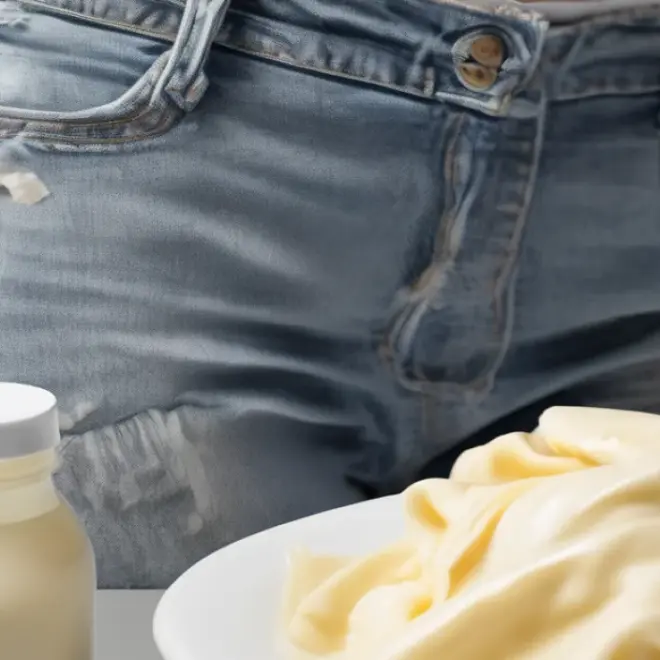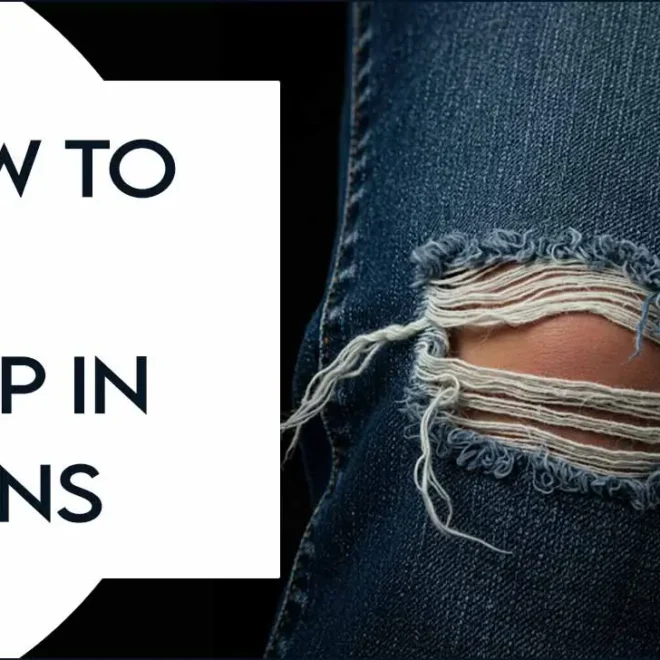Quick Summary
Yes, you can hem bootcut jeans using a dish soap method for a clean, uniform fit. This intelligent technique ensures your jeans maintain their stylish bootcut flare while achieving the perfect length, preventing them from dragging on the ground and looking messy.
How to Hem Bootcut Jeans: The Genius Dish Soap Method
Do your favorite bootcut jeans drag on the floor, looking a bit too casual and less polished than you’d like? It’s a common problem! Jeans that are too long can step on your shoes, get dirty quickly, and just don’t lay right. But the thought of sewing can seem daunting, especially when you want to keep that signature bootcut shape. Don’t worry, there’s a clever and surprisingly simple way to get that perfect length without special tools—just a bit of dish soap and a few everyday items. We’ll guide you through this easy-to-follow method, ensuring your bootcut jeans look custom-made and ready to go.
Why the Dish Soap Method Works
You might be wondering about dish soap. It might sound a little unusual, but this method leverages the soap’s ability to act as a temporary, slippery barrier. When applied to the fabric edge before measuring and marking, it helps the denim lay flat and even. This is crucial for bootcut jeans because their flare can make consistent marking difficult. The soap helps prevent the fabric from bunching or shifting, giving you a much more accurate line to follow when hemming. It essentially makes the fabric more cooperative for that all-important measurement.
What You’ll Need
Gathering your supplies is the first step to a successful hem. You don’t need to be a master tailor for this! Here’s what will help you get the job done efficiently:
- Your Bootcut Jeans: Of course, the star of the show!
- Liquid Dish Soap: Any standard brand will do. About a tablespoon is usually enough.
- Fabric Scissors: Sharp scissors designed for fabric will give you the cleanest cut.
- Measuring Tape or Ruler: For accurate length measurements. Avoid flexible sewing tapes if possible; a rigid ruler or measuring tape is best.
- Fabric Chalk or a Washable Marker: To mark your hemline.
- Pins: Straight pins to hold the hem in place before sewing.
- Iron and Ironing Board: To press your hem neatly.
- Sewing Machine or Needle and Thread: For the actual hemming. A sewing machine makes it faster, but hand-sewing works too.
- A Flat Surface: A table or clean floor to work on.
Step-by-Step: The Dish Soap Hemming Process
Ready to transform those jeans? Let’s get started. This method breaks down the hemming process into simple, manageable steps, perfect for beginners.
Step 1: Prepare Your Jeans and Work Area
Start by laying your bootcut jeans flat on a clean, hard surface. Smooth out any wrinkles. Make sure you have enough space around you to move the jeans freely. It’s important that the jeans are lying as flat and naturally as possible. You want the fabric to drape as it would when you’re wearing them, especially around the bootcut area.
Step 2: Determine Your Desired Length
This is where you decide how short your jeans should be. The easiest way to do this is to try them on with the shoes you’ll most commonly wear with them. Stand in front of a mirror. You want the hem to just graze the top of your shoe, or be about a quarter to half an inch from the floor. Mark the exact spot where you want the new hem to fall on one leg. You can use a pin or a small dot of your fabric chalk.
Pro Tip: Jeans can stretch slightly when worn. Measure them when they are comfortably against your shoes to account for this.
Step 3: Apply the Dish Soap
Now for the clever part. Take your liquid dish soap and carefully apply a thin line of it along the inside of the jean leg, right where you want to cut. You’re aiming for a line about 1.5 to 2 inches up from the original hem. The soap acts like a temporary sizing or stiffener, helping the fabric to lay flat and preventing the bootcut flare from distorting your measurement. It also gives the fabric a slight glide, making it easier to mark accurately. You don’t need a lot; a consistent, thin line is all that’s required.
A note on dish soap type: While any liquid dish soap works, some find that thicker formulas offer a bit more stability. The primary goal is to create that slippery, temporary barrier.
For more on fabric preparation, check out resources from textile experts like the TAmiCare Textile Care Database for general fabric handling best practices.
Step 4: Mark Your Cut Line
With the dish soap creating a smooth surface, use your fabric chalk or washable marker to draw a perfectly straight line all the way around the leg, directly on top of the soap line. If the soap has made the fabric too slippery to mark directly, you can gently blot it with a paper towel to remove excess before marking. Ensure the line is consistent all around the leg. This line represents where the bottom of your new hem will be.
Step 5: Measure and Mark the Hem Allowance
Now you need to decide how much fabric you want to use for your new hem. A common hem allowance for jeans is about 1 to 1.5 inches. This extra fabric will be folded up twice. Mark a second line above your first chalk line, at the desired hem allowance measurement (e.g., 1.5 inches up from your first line). This second line is where you will fold the fabric. So, you’ll have your original hem, your dish soap-marked cut line, and then your fold line above that.
Table: Recommended Hem Allowance for Jeans
| Jean Style | Recommended Hem Allowance | Notes |
|---|---|---|
| Bootcut Jeans | 1 to 1.5 inches | Allows for a clean double fold and secure stitching. |
| Straight Leg Jeans | 1 inch | Simpler fold, good for a classic look. |
| Skinny Jeans | 0.5 to 0.75 inches | A narrower hem often complements the slim fit. |
Step 6: Cut Off the Excess Fabric
Using your sharp fabric scissors, carefully cut along the first chalk line you made (the one directly on the dish soap, marking the point where the new hem will end). Cut straight across the leg. Try to make your cut as clean as possible. This removes the excess length and the original hem, which is important for an even finish, especially on bootcut styles where the original hem might be thicker.
For best cutting results, consider scissors specifically designed for fabric. Textile shears can make a significant difference in the quality of your cut. You can find good options from brands like Fiskars or Gingher. Professional seamstresses often recommend them.
Step 7: Fold and Press the Hem
Now, take the raw edge of the fabric (where you just cut) and fold it up to meet your second chalk line (your fold line). Press this fold firmly with your iron. This creates your first hem fold. Then, fold it up again so that the raw edge is neatly tucked inside, and the folded edge aligns with the original intended bottom of your jeans. Press this double fold very well with your iron. This creates a clean, finished edge inside the hem. Make sure the bootcut flare is still hanging naturally.
Important: The dish soap should have mostly evaporated or will be pressed away during this ironing step. If any residue remains, a quick rinse or wipe should remove it later.
Step 8: Pin the Hem in Place
Before you sew, pin the folded hem securely. Place pins about every 1 to 2 inches along the folded edge, through all layers of fabric. This keeps the hem from shifting while you sew and ensures it stays sharp and even. Make sure the pins are placed perpendicular to the edge, so they are easy to remove as you stitch.
Step 9: Sew the Hem
You have two main options here: using a sewing machine or hand-sewing.
- Sewing Machine: Set your machine to a straight stitch. You can use a matching thread color or a contrasting one for a decorative effect (common on ready-to-wear jeans). Start sewing as close to the inner folded edge as possible, maintaining a consistent seam allowance (usually about 1/8 inch from the fold). Sew all the way around the leg, carefully removing pins as you go.
- Hand-Sewing: Use a strong needle and thread. A backstitch is a good choice for durability, but a whipstitch can also work. Sew as close to the inner folded edge as possible, keeping your stitches small and even. Take your time and pull the thread snug, but not so tight that it puckers the fabric.
On Bootcut Flare: As you sew around the leg, the bootcut shape naturally widens. Your stitching line should follow this curve smoothly. If you’re using a sewing machine, you might find it helpful to use a ruler or guide to ensure a consistent distance from the edge, or simply guide the fabric carefully by hand. The dish soap method helps ensure the fabric lies flat enough for this stitching to be neat.
Step 10: Finish and Wash
Once you’ve sewn the entire circumference of the leg, secure your thread. Trim any loose threads. If you notice any lingering dish soap residue on the outside of the jeans, you can wipe it with a damp cloth or give the hem area a quick rinse under cool water. Finally, give your jeans a wash and dry them as usual. This will help the hem settle in and remove any remaining chalk marks or faint soap traces.
Alternatives to the Dish Soap Method
While the dish soap method is a clever hack for achieving an even hem, especially on trickier fabrics like bootcut denim, it’s good to know other approaches:
- No-Sew Hem Tape: This iron-on adhesive tape is readily available at craft stores. You fold the hem, place the tape inside, and iron it to bond the fabric. It’s quick but can sometimes be less durable than sewing and might not give the cleanest finish on heavier denim.
- Traditional Sewing: This involves measuring, marking, folding, and sewing with a machine or by hand without any special tricks. It yields the most durable and professional results but requires more confidence with sewing.
- Tailor’s Chalk and Ruler Only: Just marking and cutting without the dish soap. This works best if your fabric is very cooperative and lays perfectly flat. For bootcut jeans, this can be challenging.
Pros and Cons of the Dish Soap Method
Like any technique, this method has its strengths and potential drawbacks.
Pros:
- Accuracy: Greatly improves the accuracy of marking, especially on flared or uneven fabric edges.
- Beginner-Friendly: Simplifies the process, making it less intimidating for those new to hemming.
- Cost-Effective: Uses common household items, requiring no special purchases beyond basic sewing needs.
- Prevents Distortion: Helps keep the bootcut shape true during marking and cutting.
- Temporary: The soap is temporary and washes out completely.
Cons:
- Slight Mess: Can be a bit messy if too much soap is used or if it’s
applied unevenly. - Drying Time: Might require a brief moment for the soap to slightly dry
or set before marking, depending on fabric. - Washable Marker Reliance: If the soap makes fabric too slick for chalk, you’ll rely more heavily on a washable marker.
Frequently Asked Questions (FAQ)
Q1: Will the dish soap leave stains on my jeans?
A1: No, standard liquid dish soap is designed to be washed away and should not leave any permanent stains. A quick rinse or normal wash cycle will remove any residue.
Q2: How much fabric should I leave for the hem on bootcut jeans?
A2: For bootcut jeans, leaving 1 to 1.5 inches for a double fold is recommended. This provides enough fabric for a clean, durable hem that can accommodate the bootcut flare.
Q3: Can I use this dish soap method on other types of pants?
A3: Yes, this method is effective for hemming various types of pants, especially those with a flare or a tendency to shift, like bell-bottoms or even some wider-leg trousers.
Q4: What if my jeans are too long and I need to shorten them a lot?
A4: The dish soap method works regardless of how much length you need to remove. Just ensure you measure carefully from the original hem up to your desired new hemline and mark accurately.
Q5: Do I need to wash my jeans after hemming with dish soap?
A5: It is highly recommended to wash your jeans after hemming. This helps remove any remaining chalk marks, press out ironing imperfections, and allows the hem to settle naturally.
Q6: Do I need to hem both legs exactly the same?
A6: Absolutely. For a balanced look, both legs should be hemmed to the exact same finished length. Measure and mark each leg carefully after trying them on.
Q7: What kind of stitch is best for hemming jeans?
A7: On a sewing machine, a sturdy straight stitch is ideal. For a look similar to original jeans, you might choose a double needle stitch if your machine supports it. Hand-sewing with a backstitch offers good durability.
Conclusion
Mastering the art of hemming your bootcut jeans doesn’t require a professional sewing machine or a trip to the tailor. The genius dish soap method offers a surprisingly effective and accessible solution for achieving a perfectly tailored length. By using a common household item to create a stable surface for marking, you can ensure your bootcut jeans hang just right, sit beautifully over your shoes, and elevate your entire look. This straightforward process, broken down into simple steps, empowers you to tackle those slightly-too-long pants with confidence. So, gather your supplies, follow these easy instructions, and enjoy your perfectly hemmed bootcut jeans – ready for any occasion!









